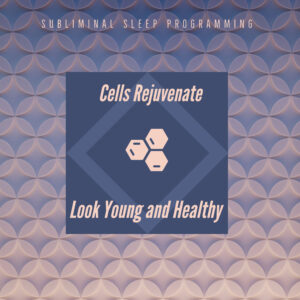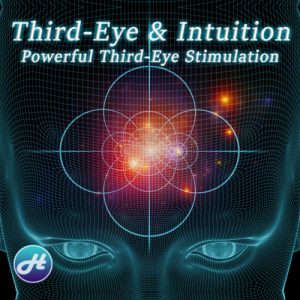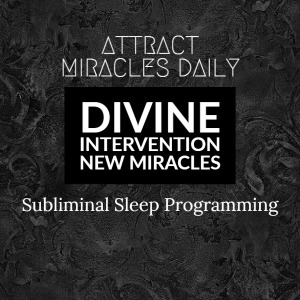1. Sarnaik SA. Sickle cell health problem: existing healing choices and potential pitfalls in preventive treatment for transcranial Doppler issues. Pediatr Radiol. 2005; 35:223– 38. [PubMed] 2. Elander J, Lusher J, Bevan D, Telfer P, Burton B. Comprehending the factors for troublesome discomfort management in sickle cell illness: proof that pseudoaddiction plays a more vital function than genuine analgesic reliance. J Discomfort Sign Manage. 2004; 27:156– 69. [PubMed] 3. Ballas SK. Sickle cell anemia: development in pathogenesis and treatment. Drugs. 2002; 62:1143– 72. [PubMed] 4. Platt OS, Thorington BD, Brambilla DJ, et al. Pain in sickle cell health problem: rates and threat aspects. NEJM.1991; 325:11– 6. [PubMed] 5. Vichinsky EP, Johnson R, Lubin BH. Multidisciplinary technique to pain management in sickle cell illness. Am J Pedaitr Hematol Oncol. 1982; 4:328– 32. [PubMed] 6. Shapiro BS, Dinges DF, Orne EC, Ohene-Frempong K, Orne MT. Recording of crisis pain in sickle cell illness. In: Tyler D, Krane E, editors. Advances in Discomfort Research Study Research Study Treatment. New York City: Raven; 1990. pp. 313– 21.7.
Shapiro BS, Dinges DF, Orne EC, et al. Home management of sickle cell associated pain in children and teenagers: nature and impact on school participation. Discomfort. 1995; 61:139– 44. [PubMed] 8. Ballas SK, Lusardi M. Health center readmission for adult acute sickle cell agonizing episodes: frequency, etiology, and prognostic significance. Am J Hematol. 2005; 79:17– 25. [PubMed] 9. Okpala I, Tawil A. Management of discomfort in sickle-cell disease. J R Soc Medication. 2002; 95:456– 8. [PMC free short article] [PubMed] 10. Dinges DF, Shapiro BS, Reilly POUND, Orne EC, Ohene-Frempong K, Orne MT. Sleep/wake dysfunction in kids with sickle cell crisis discomfort. Sleep Res. 1990; 19:323.11.
Smith WR, Bovbjerg VE, Penberthy LT, et al. Comprehending pain and boosting management of sickle cell disease: the PiSCES research study. J Nat Medication Assoc. 2005; 97:183– 93. [PMC complimentary brief article] [PubMed] 12. Chen E, Cole SW, Kato PM. A review of empirically supported psychosocial interventions for discomfort and adherence results in sickle cell health problem. J Pediatr Psychol. 2004; 29:197– 209. [PubMed] 13. Dillworth T, Jensen MP. The function of concepts in hypnosis for chronic discomfort: an examination of the literature.Open Discomfort J. 2010; 3:39– 51. [PMC complimentary short article] [PubMed] 14. Meier W, Klucken M, Soyka D, Bromm B. Hypnotic hypo- and hyperalgesia: divergent results on discomfort rankings and pain-related cerebral capabilities. Pain. 1993; 53:175– 81. [PubMed] 15. Zeltzer L, Fanurik D, LeBaron S. The cold pressor pain paradigm in kids: efficiency of an intervention design. Discomfort. 1989; 3:305– 13. [PubMed] 16. Hilgard ER, LeBaron S. Hypnotherapy of Pain in Kid with Cancer. Los Altos, CA: William Kaufmann; 1984.17.
Orne MT, Dinges DF. Hypnosis. In: Wall PD, Melzack R, editors. Book of discomfort. 2nd ed. London: Churchill Livingstone; 1989. pp. 1021– 31.18.
Patterson DR, Everett JJ, Burns GL, Marvin JA. Hypnosis for the treatment of burn pain. J Consult Clin Psychol. 1992; 60:713– 7. [PubMed] 19. Syrjala KL, Cummings C, Donaldson GW. Hypnosis or cognitive-behavioral training for the decrease of pain and queasiness throughout cancer treatment: a managed medical trial. Discomfort. 1992; 48:137– 46. [PubMed] 20. Gil KM, Carson JW, Sedway JA, Porter LS, Wilson-Schaeffer JJ, Orringer E. Follow-up of coping abilities training in grownups with sickle cell disease: analysis of everyday pain and coping practice diaries. Health Psychol.2000; 19:85– 90. [PubMed] 21. King B, Nash M, Spiegel D, Jobson K. Hypnosis as an intervention in discomfort management: a brief review.Int J Psychiatry Clin Pract. 2001; 5:97– 101. [PubMed] 22. Kosslyn SM, Thompson WL, Constantini-Ferrando MF, Alpert NM, Spiegel D. Hypnotic visual impression modifications color processing in the brain. Am J Psychiatry. 2000; 157:1279– 84. [PubMed] 23. Rainville P, Hofbauer RK, Bushnell MC, Duncan GH, Cost DD. Hypnosis regulates activity in brain structures connected with the policy of consciousness. J Cogn Neurosci. 2002; 14:887– 901. [PubMed] 24. Patterson DR, Jensen MP. Hypnosis and medical discomfort. Psychol Bull. 2003; 129:495– 521. [PubMed] 25. Elkins G, Marcus J, Palamara L, Stearns V. Can hypnosis lower hot flashes in breast cancer survivors? A literature review. Am J Clin Hypn. 2004; 47:29– 42. [PubMed] 26. Marcus J, Elkins G, Mott F. A style of hypnotic intervention for palliative care. Adv Mind Body Med.2003; 19:24– 7. [PubMed] 27. Marcus J, Elkins G, Mott F. The integration of hypnosis into a design of palliative care. Integr Cancer Ther. 2003; 2:365– 70. [PubMed] 28. Anbar RD. Hypnosis in pediatrics: applications at a pediatric lung center. BMC Pediatr.2002; 2:11– 7. [PMC complimentary brief article] [PubMed] 29. Anbar RD, Geisler SC. Recognition of kids who may take advantage of self-hypnosis at a pediatric lung center. BMC Pediatr. 2005; 5:6– 9. [PMC completely complimentary post] [PubMed] 30. Anbar RD. Self-hypnosis for the treatment of practical stomach discomfort in youth. Clin Pediatr.2001; 40:447– 51. [PubMed] 31. Dinges DF, Whitehouse WG, Orne EC, et al. Self-hypnosis training as an adjunctive treatment in the management of pain related to sickle cell illness. Int J Clin Exp Hypn. 1997; 45:417– 32. [PubMed] 32. Agargun MY, Oner AF, Akbayram S. Hypnotic intervention for discomfort management in a kid with sickle cell anemia. Sleep Hypn. 2001; 3:127– 8.33.
Zeltzer L, Dash J, Holland JP. Hypnotically caused discomfort control in sickle cell anemia. Pediatrics.1979; 64:533– 6. [PubMed] 34. Page RA, Handley GW. Psychogenic and physiological sequelae to hypnosis: 2 case reports. Am J Clin Hypn. 1990; 32:250– 6. [PubMed] 35. Gruzelier J. Unwanted results of hypnosis: an evaluation of the proof and its ramifications. Contemp Hypn.2000; 17:163– 93.36.
Montgomery GH, DuHamel KN, Redd WH. A meta-analysis of hypnotically triggered analgesia: how effective is hypnosis? Int J Clin Exper Hypn. 2000; 48:138– 53. [PubMed] 37. Morgan AH, Hilgard JR. The Stanford hypnotic scientific scale for adults. Am J Clin Hypn. 1978; 21:134– 47. [PubMed] 38. Becker J, Schwartz C, Saris-Baglama Registered Nurse, Kosinski M, Bjorner JB. Using item action theory (IRT) for developing and analyzing the pain effect questionnaire (PIQ-6) Discomfort Medication. 2007; 8: S129– 44.39.
Jensen MP, Karoly P. Self-report scales and treatments for evaluating discomfort in grownups. In: Turk DC, Melzack R, editors. Handbook of Pain Evaluation. New York City: Guilford Press; 1992. pp. 135– 51.40.
Jensen MP, Turner JA, Romano JM. What is the optimal variety of levels required in discomfort strength measurement? Pain. 1994; 58:387– 92. [PubMed] 41. Williamson A, Hoggart B. Discomfort: an evaluation of three frequently utilized discomfort rating scales. J Clin Nurs.2005; 14:798– 804. [PubMed] 42. Beck AT, Ward CH, Mendelson M, Mock J, Erbaugh J. A stock for determining anxiety. Arch Gen Psychiatry. 1961; 4:561. [PubMed] 43. Supervisor MD. Measuring cognitive status. In: Frank-Stromborg M, Olsen SJ, editors. Instruments for Scientific Health-Care Research. Second ed. Sudbury, MA: Jones and Bartlett Publishers; 1997. pp. 86– 113.44.
Gallagher D, Breckenridge J, Steinmetz J, Thompson L. The Beck Stress and anxiety Inventory and research diagnostic requirements: congruence in an older population. J Consult Clin Psychol. 1983; 51:945– 6. [PubMed] 45. Grim PM. Figuring out stress and anxiety. In: Frank-Stromberg M, Olsen SJ, editors. Instruments for Medical Health-Care Research Study. Second ed. Boston: Jones and Bartlett Publishers; 1997. pp. 332– 41.46.
Spielberger CD, Gorusch F, Lushene R, Vagg PR, Jakobs GA. State Quality Stress And Anxiety Stock Manual.Palo Alto, CA: Consulting Psychologist Press; 1983.47.
Barnes LLB, Harp D, Jung WS. Reliability generalization of scores on the Spielberg State-Trait Stress And Stress And Anxiety Stock. Educ Psychol Meas. 2002; 62:603– 18.48.
Grachev ID, Kumar R, Swarnkar A, Chang J, Ramachandran TS. Outcome of posterior temporal-parietal hematoma on orbital frontal chemistry in relation to a cognitive and stress and anxiety state: a combined H-MRS and neuropsychological research study of an uncommon case as compared with 16 healthy topics. J Chem Neuroanat.2002; 23:223– 30. [PubMed] 49. Rosenstiel AK, Keefe FJ. Making use of coping strategies in consistent low pain in the back clients: relationship to patient attributes and existing change. Pain. 1983; 17:33– 44. [PubMed] 50. Griswold GA, Evans S, Spielman L, Fishman B. Coping techniques of HIV clients with peripheral neuropathy. AIDS Care. 2005; 17:711– 20. [PubMed] 51. Gil KM, Abrams MR, Phillips G, Keefe FJ. Sickle cell health problem pain: relation of coping techniques to adjustment. J Consult Clin Psychol. 1989; 57:725– 31. [PubMed] 52. Keefe FJ, Caldwell DS, Queen K, et al. Osteoarthritis knee pain: a behavioral analysis. Pain.1987; 28:309– 21. [PubMed] 53. Buysse DJ, Reynolds CF, Monk TH, Berman SR, Kupfer DJ. The Pittsburgh Sleep Quality Index: a new instrument for psychiatric practice and research study. Psychiatry Res. 1989; 28:193– 213. [PubMed] 54. Hilgard ER, Weitzenhoffer AM, Landes J, Moore RK. The distribution of vulnerability to hypnosis in a trainee population: a study using the Stanford Hypnotic Susceptibility Scale. Psychol Monogr. 1962; 75:22.55.
Benham G, Smith N, Nash MR. Hypnotic vulnerability scales: are the mean rankings increasing? Int J Clin Exp Hypn. 2002; 50:5– 16. [PubMed] 56. Jensen MP. Hypnosis for Chronic Pain Management: Therapist Guide. New York City City, NY: Oxford University Press; 2011.

















